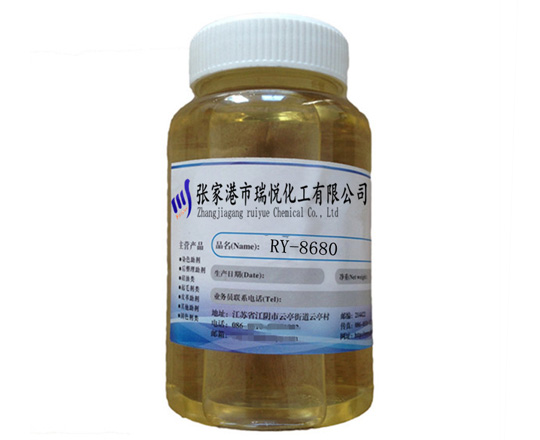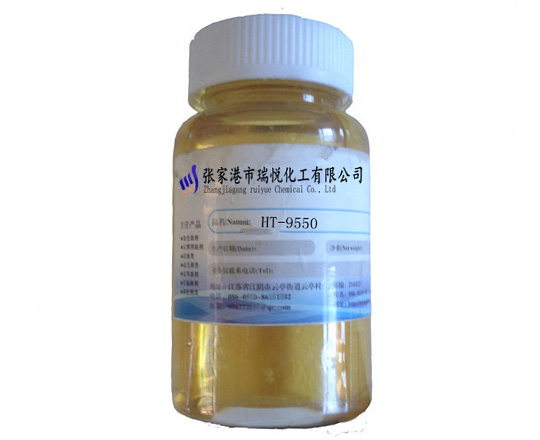Professional comment on the characteristics of various chemical fibers (polyester, nylon, spandex, acrylic)
1. Viscose (hygroscopic and easy to dye)
2. Polyester (stiff and not wrinkled)
Three, nylon (strong and wear-resistant)
Four, acrylic fiber (bulky and light fast)
Five, vinylon (water soluble moisture absorption)
Six, polypropylene fiber (lightweight and warm)
Seven, spandex (elastic fiber)
1. Viscose (hygroscopic and easy to dye)
It is man-made cellulose fiber, which is made by solution spinning. Because the coagulation rate of the fiber core layer and the outer layer is inconsistent, a skin-core structure is formed (obviously seen from the cross-sectional slice). Viscose is the most hygroscopic among ordinary chemical fibers. It has good dyeability, good wearing comfort, poor elasticity, strength in wet state, and poor abrasion resistance. Therefore, viscose is not washable and has poor dimensional stability. The proportion is heavy, the fabric is heavier, and it is alkali and acid resistant.
Viscose fiber has a wide range of uses. Almost all types of textiles will use it, such as filaments as linings, beautiful silks, flags, streamers, tire cords, etc.; short fibers are used as cotton-like, wool-like, blended, interwoven, etc.
2. Polyester (stiff and not wrinkled)
Features: High strength, good impact resistance, heat resistance, corrosion resistance, moth resistance, acid and alkali resistance, good light resistance (second only to acrylic), 1000 hours of exposure, strong retention of 60-70%, poor moisture absorption , Dyeing is difficult, the fabric is easy to wash and dry, and has good shape retention. It has the characteristics of "washable and wearable".
Uses: filament: often used as a low-elastic yarn to make various textiles; staple fiber: cotton, wool, hemp, etc. can be blended; industrial: tire cord, fishing nets, ropes, filter cloth, insulation materials, etc. It is currently the largest amount of chemical fiber.
Three, nylon (strong and wear-resistant)
The biggest advantage is that it is strong and wear-resistant, which is the best one. Low density, light fabric, good elasticity, fatigue resistance, good chemical stability, alkali and acid resistance!
The biggest disadvantage is that the sun resistance is not good, the fabric will turn yellow after long exposure, the strength will decrease, and the moisture absorption is not good, but it is better than acrylic and polyester.
Uses: filaments are mostly used in knitting and silk industries; staple fibers are mostly blended with wool or wool-type chemical fibers for gabardine, vanidine, etc. Industry: cords and fishing nets, and can also be used as carpets, ropes, conveyor belts, screens, etc.
Four, acrylic fiber (bulky and light fast)
The performance of acrylic fiber is very similar to wool, so it is called "synthetic wool".
Molecular structure: Acrylic fiber is unique in the internal structure of Oita, showing an irregular spiral conformation, and there is no strict crystallization zone, but there are high-order and low-order arrangements. Because of this structure, acrylic fiber has good thermal elasticity (processable bulked yarn), acrylic fiber has a low density, which is smaller than wool, and the fabric has good warmth retention.
Features: Good sunlight and weather resistance (ranking first), poor moisture absorption, and difficult to dye.
Pure acrylonitrile fiber, due to its compact internal structure and poor wearability, improves its performance by adding the second and third monomers. The second monomer improves: elasticity and feel, and the third monomer improves dyeability.
Uses: Mainly used for civilian use. It can be pure spinning or blending to make a variety of wool, wool, blankets, sportswear, and also: artificial fur, plush, bulked yarn, hose, parasol cloth, etc.
Five, vinylon (water soluble moisture absorption)
The biggest feature is the high moisture absorption, the best synthetic fiber, known as "synthetic cotton". The strength is worse than that of nylon and polyester, and the chemical stability is good. It is not resistant to strong acids and alkalis. Sunlight resistance and weather resistance are also very good, but it is resistant to dry heat but not damp heat (shrinkage) elasticity, the fabric is easy to wrinkle, dyeing is poor, and the color is not bright.
Uses: Multi-cotton blending: muslin, poplin, corduroy, underwear, canvas, tarpaulin, packaging materials, work clothes, etc.
Six, polypropylene fiber (lightweight and warm)
Polypropylene fiber is the lightest fiber among common chemical fibers. It hardly absorbs moisture, but has good wicking ability, high strength, stable fabric size, good abrasion resistance and good chemical stability. But: poor thermal stability, not sun-resistant, easy to aging and brittle damage.
Uses: Can knit socks, mosquito nets, quilts, warm padding, wet diapers, etc. Industrial: Carpets, fishing nets, canvases, hoses, medical tapes instead of cotton gauze, and sanitary products.
Seven, spandex (elastic fiber)
The best elasticity, the worst strength, poor moisture absorption, good light resistance, acid resistance, alkali resistance, and abrasion resistance.
Uses: Spandex is widely used in underwear, women's underwear, casual wear, sportswear, socks, pantyhose, bandages, etc. in the textile field, medical field, etc. based on its characteristics. Spandex is a highly elastic fiber necessary for high-performance clothing that is dynamic and convenient. Spandex can be extended 5-7 times longer than the original shape, so it is comfortable to wear, soft to the touch, wrinkle-free, and can always maintain the original contour.
2. Polyester (stiff and not wrinkled)
Three, nylon (strong and wear-resistant)
Four, acrylic fiber (bulky and light fast)
Five, vinylon (water soluble moisture absorption)
Six, polypropylene fiber (lightweight and warm)
Seven, spandex (elastic fiber)
1. Viscose (hygroscopic and easy to dye)
It is man-made cellulose fiber, which is made by solution spinning. Because the coagulation rate of the fiber core layer and the outer layer is inconsistent, a skin-core structure is formed (obviously seen from the cross-sectional slice). Viscose is the most hygroscopic among ordinary chemical fibers. It has good dyeability, good wearing comfort, poor elasticity, strength in wet state, and poor abrasion resistance. Therefore, viscose is not washable and has poor dimensional stability. The proportion is heavy, the fabric is heavier, and it is alkali and acid resistant.
Viscose fiber has a wide range of uses. Almost all types of textiles will use it, such as filaments as linings, beautiful silks, flags, streamers, tire cords, etc.; short fibers are used as cotton-like, wool-like, blended, interwoven, etc.
2. Polyester (stiff and not wrinkled)
Features: High strength, good impact resistance, heat resistance, corrosion resistance, moth resistance, acid and alkali resistance, good light resistance (second only to acrylic), 1000 hours of exposure, strong retention of 60-70%, poor moisture absorption , Dyeing is difficult, the fabric is easy to wash and dry, and has good shape retention. It has the characteristics of "washable and wearable".
Uses: filament: often used as a low-elastic yarn to make various textiles; staple fiber: cotton, wool, hemp, etc. can be blended; industrial: tire cord, fishing nets, ropes, filter cloth, insulation materials, etc. It is currently the largest amount of chemical fiber.
Three, nylon (strong and wear-resistant)
The biggest advantage is that it is strong and wear-resistant, which is the best one. Low density, light fabric, good elasticity, fatigue resistance, good chemical stability, alkali and acid resistance!
The biggest disadvantage is that the sun resistance is not good, the fabric will turn yellow after long exposure, the strength will decrease, and the moisture absorption is not good, but it is better than acrylic and polyester.
Uses: filaments are mostly used in knitting and silk industries; staple fibers are mostly blended with wool or wool-type chemical fibers for gabardine, vanidine, etc. Industry: cords and fishing nets, and can also be used as carpets, ropes, conveyor belts, screens, etc.
Four, acrylic fiber (bulky and light fast)
The performance of acrylic fiber is very similar to wool, so it is called "synthetic wool".
Molecular structure: Acrylic fiber is unique in the internal structure of Oita, showing an irregular spiral conformation, and there is no strict crystallization zone, but there are high-order and low-order arrangements. Because of this structure, acrylic fiber has good thermal elasticity (processable bulked yarn), acrylic fiber has a low density, which is smaller than wool, and the fabric has good warmth retention.
Features: Good sunlight and weather resistance (ranking first), poor moisture absorption, and difficult to dye.
Pure acrylonitrile fiber, due to its compact internal structure and poor wearability, improves its performance by adding the second and third monomers. The second monomer improves: elasticity and feel, and the third monomer improves dyeability.
Uses: Mainly used for civilian use. It can be pure spinning or blending to make a variety of wool, wool, blankets, sportswear, and also: artificial fur, plush, bulked yarn, hose, parasol cloth, etc.
Five, vinylon (water soluble moisture absorption)
The biggest feature is the high moisture absorption, the best synthetic fiber, known as "synthetic cotton". The strength is worse than that of nylon and polyester, and the chemical stability is good. It is not resistant to strong acids and alkalis. Sunlight resistance and weather resistance are also very good, but it is resistant to dry heat but not damp heat (shrinkage) elasticity, the fabric is easy to wrinkle, dyeing is poor, and the color is not bright.
Uses: Multi-cotton blending: muslin, poplin, corduroy, underwear, canvas, tarpaulin, packaging materials, work clothes, etc.
Six, polypropylene fiber (lightweight and warm)
Polypropylene fiber is the lightest fiber among common chemical fibers. It hardly absorbs moisture, but has good wicking ability, high strength, stable fabric size, good abrasion resistance and good chemical stability. But: poor thermal stability, not sun-resistant, easy to aging and brittle damage.
Uses: Can knit socks, mosquito nets, quilts, warm padding, wet diapers, etc. Industrial: Carpets, fishing nets, canvases, hoses, medical tapes instead of cotton gauze, and sanitary products.
Seven, spandex (elastic fiber)
The best elasticity, the worst strength, poor moisture absorption, good light resistance, acid resistance, alkali resistance, and abrasion resistance.
Uses: Spandex is widely used in underwear, women's underwear, casual wear, sportswear, socks, pantyhose, bandages, etc. in the textile field, medical field, etc. based on its characteristics. Spandex is a highly elastic fiber necessary for high-performance clothing that is dynamic and convenient. Spandex can be extended 5-7 times longer than the original shape, so it is comfortable to wear, soft to the touch, wrinkle-free, and can always maintain the original contour.






